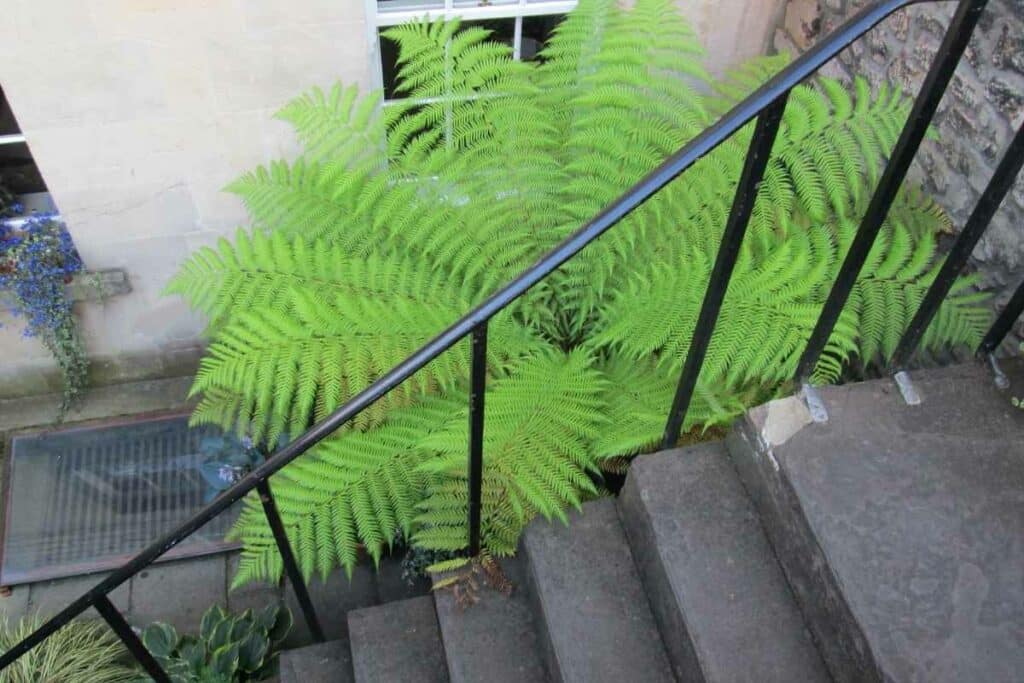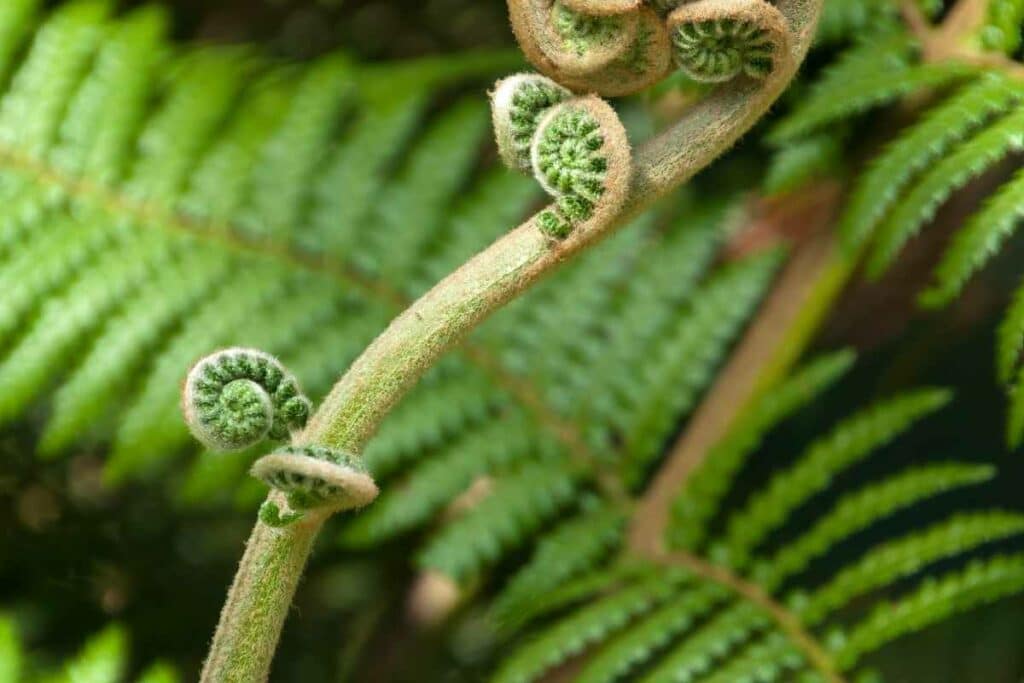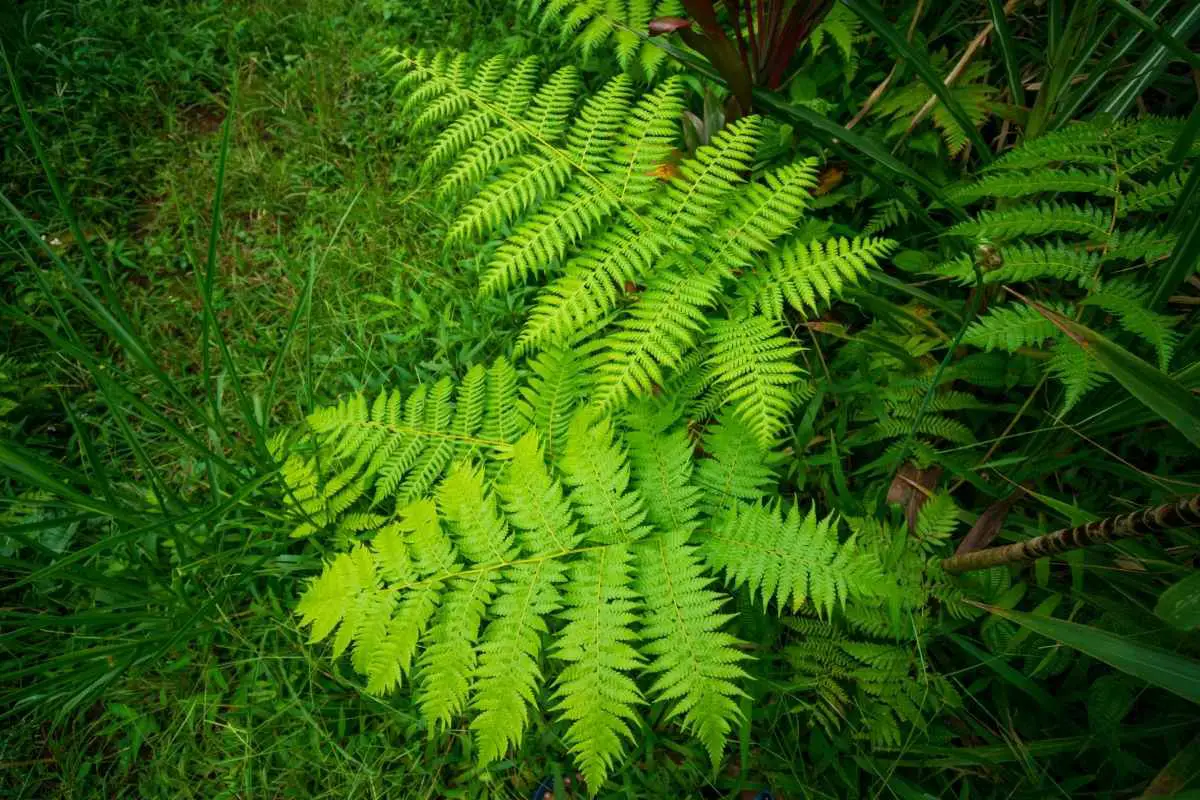Taking huge plants and trying to grow them away from their main environments around your house so that they can provide shade, fruit, aroma, or just anesthetic isn’t the easiest choice, specifically if you’re doing it yourself.
Dicksonia Antarctica is one of those plants, as it provides profuse shade. That’s why today we’ll teach you the ins and outs of growing Dicksonia Antarctica in pots.
What Is Dicksonia Antarctica?
Dicksonia Antarctica is also known as the Soft Tree Fern or the Man Fern, and it’s one of the many species of evergreen tree fern.
This group of species gets the name evergreen from the fact that they hardly ever die.
They just keep on regrowing, as their trunk is basically rhizomes, which are the remains of previous growth.

Originally, the Dicksonia Antarctica comes from eastern Australia, specifically Tasmania, which is why some prefer to call it the Tasmanian Tree Fern.
Keep in mind, though; it has no flowers; subsequently, it has no aroma whatsoever.
Anatomy of Dicksonia Antarctica
The Dicksonia Antarctica has a very thick trunk, also known as a rhizome.
From the tip of this rhizome, which is very hairy, you’ll find the growth of fonds.
These fonds can either be fertile or sterile and can grow and reach out, forming a canopy with a diameter of 19 ft.
Did You Know? As a matter of fact, the Dicksonia Antarctica will grow all the way to 49 ft, given the right environment and circumstances. Nevertheless, the more common growth limit is 15-16 ft.
How to Plant Dicksonia Antarctica?
Primarily, you must make sure that the pot is huge enough to house a Dicksonia Antarctica.
Now, let’s get to the steps of planting:
- First, get your plant and figure out its root ball size. Make sure not to injure the plant during this procedure.
- Whip out your pot and dig a hole in the soil inside of it that is two times the size of your plant’s root ball so that you can install the plant comfortably.
- Since it’s out of its natural environment, it needs a boost to continue flourishing. That is why you should mix 5-10 gallons of compost with the soil that you have, and make sure that the compost is well distributed.
- If the soil is too dry and won’t drain well, add some perlite to the mix.
- Now, place the plant inside of the pot and make sure that it’s entirely covered with your soil, compost, and perlite mix.
- Don’t bring the soil way too high towards the trunk, as that might cause it to start rotting on the inside.
- Put as much water as possible without drowning the plant. You can resort to using a draining pot with a water tray so that you can put as much water as you want without the risk of drowning the plants.
Where to Plant Dicksonia Antarctica?
Dicksonia Antarctica is used to the moderate but humid weather of forests.
So you’ll mostly find it next to river banks in places that get a ton of rain and very little sunlight due to consistent shade.
As a result, you must try to simulate these conditions if you want your plant to thrive.
In other words, you should place your pot of Dicksonia Antarctica in a place that is well shaded with little sunlight and copious amounts of water.
The Dicksonia Antarctica can take a little bit of sunlight, but not too much, and only if it’s well-watered.
If it’s dry, sunlight will only help kill it much faster.
The same goes for the cold and wind; it can take just a little bit of cold weather and some wind.
Plus: There are certain precautions that you need to take to protect your plant from these conditions.
How to Care For Dicksonia Antarctica?

After you’ve successfully planted your Tasmanian Tree Fern, how do you care for it so that it reaches the fantastic heights that we’ve mentioned, stays green, and starts providing you with the shade?
Watering
Consistent watering is key when it comes to Dicksonia Antarctica.
It must never be dry, or else you’ll start noticing its trunk, stems, and fonds beginning to shrivel and turn brownish.
If you start seeing these signs, you’ll have a small time window to rescue your plant.
Support
If you’ve just moved your plant from the soil to a pot or from one pot to another, its trunk might not be as stable as it was before.
However, you can place some wood pieces for support, but make sure that they’re tall and thick enough to provide the needed support.
Fertilizer
As we’ve mentioned before, the Tasmanian Tree Fern needs a head-start when it’s not in its natural environment.
That’s where fertilizers come into play. You can use compost; some prefer liquid feed along with the water or even a spring feed scattered around the base.
Cutting
Like any other plant, some of its leaves, also known as fonds, will grow too far from the reach of the roots and turn brown, or in other words, they’ll die.
That happens to leave space for the new formation.
So, as a gardener, you’ll need to cut these brownish fonds to relieve the plant of its burden, plus allow the new growth to thrive and take full advantage of the nutrients and water.
Keep In Mind: The rule here is that you mustn’t cut anything closer to the plant’s trunk than 15 cm.
Winter Protection
The Dicksonia Antarctica can take a little bit of cold weather, but nothing too drastic.
That is why you must start covering around 1.5 feet of its trunk using several layers of fleece.
That will ward off the cold while still allowing for breathability.
In Conclusion
To wrap up, the Dicksonia Antarctica is a humongous plant that hardly ever dies.
It grows mainly in Australia, yet, nowadays, it can be shipped anywhere and grown in pots.
That is as long as you plant it properly and water it frequently.
You Might Also Read
- Pink Quill Plant Care Guide (Beautiful Images)
- Your Complete Guide to Growing Jade Plants
- Best States for Gardening in the USA (Full-List Rated by State)
